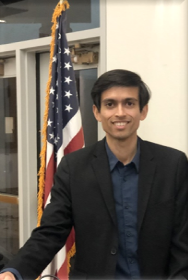Berryessa Union School District

Jamal Khan
I attended Berryessa schools K-8. To serve today's students, it's easy to put myself in their shoes because I was once in their shoes. I was in those classrooms. I received that education. And I'll do everything I can to ensure today's Berryessa students have the same high-quality education I did.
-
Over 80% of voters polled say they want elected officials to prioritize children and families. What are the top three issues affecting our children and families and how will you make our region a place where all families can thrive?
Issue #1: Closing schools should be a matter of last resort, after all other options have been meticulously explored and exhausted. Creative and unconventional solutions should be actively sought out and cultivated. Issue #2: If declining enrollment and budgetary realities make the closing of schools inevitable, then the process should be fair and equitable, with adequate notice and deliberation, rather than hasty and arbitrary. Issue #3: More time should be granted for community input before a decision to close a school. But the process should not drag on too long either, leaving families in a state of uncertainty. A transparent and participatory process is as important as the end result.
-
High quality childcare improves school readiness and parents' workforce participation. What will you do to improve access to high quality childcare and preschool programs in our diverse communities?
When I worked for the Obama White House, my policy portfolio included universal pre-K and paid sick and family leave. Subsidized child care is just as important, but it will require mobilization beyond the jurisdiction of a local school board. We need state legislation to truly make an impact. In 2020, as the pandemic took hold, over 8,000 child care centers closed in our state. Research indicates one reason parents remove their children from Berryessa schools and enroll them in private schools is that the latter offer child care before and after school. If school is out in the early afternoon and parents get off work at 5pm or later, the availability of child care makes a huge difference.
-
Much of the student achievement gap has been linked to the opportunity gap that children in low-income families and children of color confront (e.g., lack of access to healthy food, preschool, tutors, and enrichment activities). If elected, what will you do to increase equity of opportunity?
At Berryessa, I inadvertently discovered some of my classmates qualified for free lunch. They could focus on studying instead of hunger. I later worked for the Food and Nutrition Service, which administers child nutrition programs. When federal regulations say kids receiving free or reduced price meals shouldn't be separated or easily distinguishable from other kids, it matters. It matters because kids notice things, even when you don't think they're paying attention. When regulations place just as strong an emphasis on a congregate meal setting as a meal pattern requirement, it matters. It matters because people don't live on bread alone. And in no case is this more true than with children.
-
What steps will you take to improve inclusion and outcomes for children with disabilities and their families in our community?
When I was an undergraduate student at Berkeley, I helped out at the Disabled Students Program. I learned the importance of dictation and magnification technologies to facilitate access and ensure that students with disabilities would be sufficiently accommodated. Today, I work as a staff attorney at the Homeless Action Center, where I help disabled individuals apply for public benefits. Some come from a culture where disability is stigmatized and hidden; I do everything I can to combat this and assure them they have nothing to be ashamed of. Because I've worked with this community, I have a deeper understanding of their specific needs, and I will bring this experience to the school board.
-
If elected, how will you use the resources of your new role to improve children's well-being and access to mental and behavioral health services?
The pandemic had a negative effect on the trajectory of our students, not only in academic achievement but also in mental and behavioral health. Scientific research has revealed that students' brains actually aged faster during COVID. Current stressors, such as cyberbullying or a parent being laid off, can make it hard for students to focus in the classroom. I'll promote mental health education and early intervention programs, helping children and families access crucial resources to support emotional and behavioral well-being before they become especially acute. The plasticity of young brains ensures that students can rebound quickly, if they have the appropriate evidence-based resources.